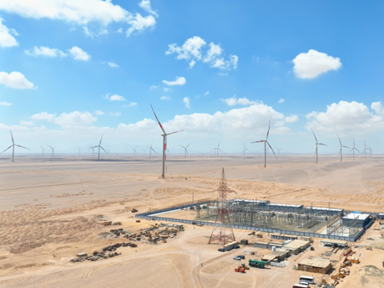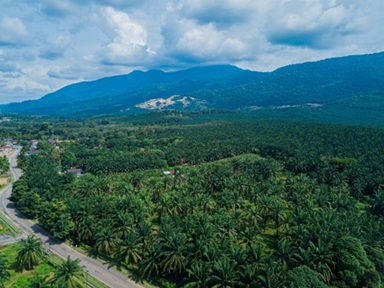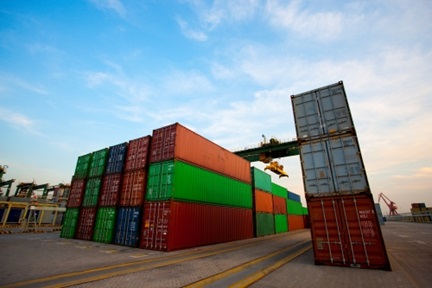Trade acquires momentum in Africa
Improving trade is a top priority for Africa. But there is still a long way to go before cross-border trade contributes more significantly to the continent’s growth and prosperity.
by Johan Burger

FLOUTING TRADE RULES IN COMESA
The Common Market for Eastern and Southern Africa (Comesa) recently encountered a fierce trade dispute involving some of Africa's largest economies. According to a Comesa lobbyist, this followed the Kenyan decision to impose tariffs of up to 25% on goods from the regional economic trading block. According to the Comesa Business Council (CBC), Kenyan customs authorities flouted Comesa guidelines by applying non-preferential customs duties on Comesa origin goods.
Businesses in several Comesa countries reported that their products were stuck at various ports of entry to Kenya. Several countries therefore lodged complaints against Kenya amid the cancellation of pre-existing orders due to the measures imposed by Nairobi. Amongst others, the Egyptian government reportedly directed a complaint to the Kenyan government to protest the decision to impose a 25% tariff on Egyptian exports in violation of the Comesa free trade agreement.
Kenya maintains that it had not imposed any tariffs on goods from Comesa members. The Egyptian government requested a clarification to formulate a response to mitigate the impact of the decision on its exporters. According to the CBC, Kenya’s decision also affected non-Comesa countries that have long enjoyed preferential treatment from the EAC.[1]
POINT OF INTEREST
- Two features of the EAC-UK trade agreements are immediately apparent. One is the need for the UK to reach out to partners to demonstrate life after the completion of Brexit, with Africa a beneficiary of this development. Second is the inherent challenge of successfully implementing AfCFTA. In the EAC, often cited as one of the more successful REC’s, member countries seemingly find it difficult to collaborate. Within a far more heterogenous African continent, the going will undoubtedly be more difficult. If six countries with close ties find it difficult to reach consensus on important issues such as trade, what are the chances of 54 countries agreeing to function in a mutually beneficial manner? Kenya’s action to flout trade rules in Comesa is a striking example of the difficulty many African governments experience when attempting to collaborate.
SUPPORT FOR TANZANIAN EXPORTERS TO MALAWI
Tanzanian exporters find their access to foreign markets impeded by a number of barriers. To address these issues, the Tanzania Private Sector Foundation (TPSF) is formulating a business strategy that will simplify the access of local traders to regional and global markets.
While local manufacturers produce high quality goods that meet global standards, they reportedly face challenges in accessing markets. For example, while the demand for a number of local products in Malawi continues to be high, export turnover to Malawi in 2019 remained below US$60 million.
There are challenges to access markets in Africa. Most local exporters lack the market information needed to exploit the large markets in both the regional and international blocks. In addition, some exporters lack knowledge of the export procedures that provide access to the markets, thereby affecting the growth of their business.
According to the TPSF, the envisaged strategy would serve as a roadmap for Tanzanians wanting to invest abroad or seal deals with counterparts in their export markets. The roadmap would also clarify export procedures and taxes related to exports.
According to the Tanzania high commissioner in Malawi, Mr Benedict Mashiba, Tanzanian farm and industrial products were highly in demand in Malawi. These products include items such as washing soaps, cement clinkers, petroleum jelly, salt, bananas and potatoes.
With its 18 million people and an economy growing at 5.8% in the pre-Covid era, Malawi was an ideal market for Tanzanian exporters. Malawi was the second largest export market to Tanzanian products after South Africa. Due to Malawi’s geographical proximity to Tanzania and improved transportation infrastructures, Tanzanian traders had the potential to move to the top of the list.[2]
POINT OF INTEREST
- More African governments should emulate the Tanzanian government’s initiatives to facilitate trade efforts by its exporters. This tactic can play a meaningful role to stimulate the manufacturing sectors in Africa, create many jobs, and generate added value in the process.
A NEW FREE TRADE ZONE BRINGS SUDAN AND SOUTH SUDAN TOGETHER
Sudan and South Sudan are promoting border trade between them using free trade zones. They recently laid the foundations for the free trade zone in the area of Mokhaleef in El Jebelein locality in White Nile state (in Sudan), and also inaugurated the Kosti and El Jebelein free zones, as well as resumed river traffic between the two countries. The hope is that the volume of annual trade exchange between the two countries in the near future will reach $3 billion.
The Sudanese-South Sudanese political security mechanism also decided to open ten border crossings between the two countries.
The free trade zones will create many job opportunities for the residents of the region and generate significant returns for the state treasuries of both countries.
In the first stage of the free trade zone, it will concentrate on an industrial project for export products that White Nile state abounds in and reiterated the transitional government's affirmation to cooperation with South Sudan.
These developments take place despite on-going disputes regarding border areas. Some areas experienced a significant upsurge in cattle rustling, hijacks, and other robberies earlier this year. There is no government or police force in the area. Currently, the UN Interim Security Force for Abyei (UNISFA) is entrusted with overseeing demilitarisation and maintaining security in the area through its peacekeeping mission.[3]
POINT OF INTEREST
- Hopefully the current rapprochement between Sudan and South Sudan will lead to more stable relations between these two countries. This will also benefit the region as a whole, especially now that Ethiopia is experiencing internal violence and instability in the Tigray state. While the Horn of Africa has great potential in its agriculture, mining, oil and renewable energy sectors, as a region it finds it difficult to maintain political stability.
Additional Readings
Anyanzwa, J. 2020. East African partners throw Kenya under the bus in Brexit talks. The East African. 23 September 2020. Available at https://www.theeastafrican.co.ke/tea/business/east-african-partners-throw-kenya-under-the-bus-in-brexit-talks-2370246. Accessed 20 November 2020.
Kamala, J. 2020. TPSF strategises to address export challenges. Daily News. 15 October 2020. Available at https://dailynews.co.tz/news/2020-10-155f887a973f7dd.aspx. Accessed 20 November 2020.
Kitimo, A. and Mutambo, A. 2020. UK, Kenya agree on landmark trade deal. The East African. 4 November 2020. Available at https://www.theeastafrican.co.ke/tea/business/uk-kenya-trade-deal-2730414. Accessed 20 November 2020.
Mokhlaheef. 2020. Sudan-South Sudan aim for $3bn exchange in free trade zones. Dabanga. 28 October 2020. Available at https://www.dabangasudan.org/en/all-news/article/sudan-south-sudan-aim-for-3-bn-exchange-in-free-trade-zones. Accessed 20 November 2020.
Ngugi, B. 2020. Confusion over Kenya 25pc tariff sparks Comesa trade row. Business Daily Africa. 20 September 2020. Available at https://www.businessdailyafrica.com/economy/Confusion-over-25pc-tariff-sparks-Comesa-trade-row/3946234-5625458-hsx4y4z/index.html. Accessed 20 November 2020.
References








